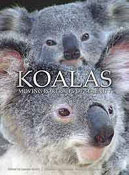Blogging revolution among elected officials, public agencies
A new report by a Southeastern Louisiana University management professor and issued by the IBM-based Center for the Business of Government examines how blogging is becoming an increasingly common method for elected officials and public agencies to communicate with constituencies. The report chronicles blogging activities at all levels of government, including members of Congress, governors, mayors, police and fire departments.
 Using the Internet, particularly blogging, is becoming an increasingly common method for elected officials and public agencies to communicate with constituencies; a Southeastern Louisiana University professor explains in a new report, issued by IBM’s Washington, DC-based Center for the Business of Government.
Using the Internet, particularly blogging, is becoming an increasingly common method for elected officials and public agencies to communicate with constituencies; a Southeastern Louisiana University professor explains in a new report, issued by IBM’s Washington, DC-based Center for the Business of Government.
“As a whole, blogging is still in its infancy, but it is starting to take hold among public officials across the American landscape,” said David C. Wyld, Southeastern’s Maurin Professor of Management and director of the university’s Strategic e-Commerce/e-Government Initiative.
Defining a blog as an online journal that can be updated regularly with entries typically displayed in chronological order, he said blogging is increasingly moving from the fringes to the mainstream, with intense interest in both corporate American and public offices in joining the trend of user-generated media. There are more than 60 million blogs in existence today, with more than 50,000 being created daily.
Wyld’s report, “The Blogging Revolution: Government in the Age of Web 2.0,” chronicles blogging activities at all levels of government, including members of Congress, governors, mayors, police and fire departments, and provides insights into how blogging is used within agencies to improve internal communications and speed the flow of information. “Web 2.0” refers to the second generation Internet, where interactivity among users is the key. The report also assesses blogging in corporate America, with a first of its kind survey of top executives who blog and the potential benefits and challenges associated with blogging.
He noted that blogging by political candidates has been highly publicized in the current election cycle, but less recognized is the growing trend for agencies and public officials to use this new communications medium. “Just as in the private sector, public officials are finding blogging to be an excellent way to communicate both within their organizations and with their constituencies,” he said.
In looking at bloggers and blog readers, Wyld said they tend to be better educated, more diverse and more urban than the American population as a whole. In addition, from a political perspective, they are more civically involved and politically engaged in both the online and offline worlds.
The report includes tables detailing Wyld’s research, which is baseline data identifying blogs initiated by members of Congress, Congressional committees, governors and lieutenant governors, state legislators and other officials throughout the nation and in places as far away as Scotland and India.
“Members of Congress were a bit slow to pick up on blogging,” Wyld said, citing factors such as the lack of pressure to engage in blogging, worries about giving up control of the message, a lack of web savvy, and the time management and demanding workload Congressional members carry. A facilitating step developed in late 2006 when the House Administration Committee began offering the House Web Log Utility.
“This made it easier for congressional offices to offer blogs on their official member websites,” he said. “And now skepticism about blogging is turning into curiosity about how this new Web 2.0 tool can be used to communicate with constituents in a unique way.” Today, there are Senators and Representatives, including Presidential candidate Barrack Obama, who are adding videos and podcasts to their blog sites.
Wyld – who devoted over a year to this project since having his proposal funded through IBM’s research grant competition -- offers a case study in organizational blogging on the U.S. Strategic Command (STRATCOM), citing it one of the best examples of governmental blogging.
“The military is perhaps the most important of all public sector organizations today,” Wyld said. “In the war on terror, the military is learning that information – more specifically, information sharing – is a key strategic success factor. The military is realizing that its traditional top-down structure, with long decision cycles and one-way flow of information, is not a good fit for today’s needs.”
STRATCOM, Wyld explained, is implementing 24-hour, real-time secure communications from the top generals to troops in the field, with the centerpiece of the effort in a classified network called Strategic Knowledge Integration or SKI-web. “This is nothing less than a 24-7-365 virtual intelligence meeting with blogging and chat as essential parts of the operation,” he said. STRATCOM’s Commander, Marine General James Cartwright – who has been nominated to be the next vice chairman of the Joint Chiefs of Staff – is a huge proponent of the use of blogging and other Web 2.0 technologies to better equip the military to fight the global war on terror.
Greener Magazine
Copies of the report can be downloaded for free at http://www.businessofgovernment.org/main/publications/grant_reports/details/index.aspgid=291. The Center for the Business of Government will also provide free hard copies of the report to interested public officials, members of the media, and educators.
 Using the Internet, particularly blogging, is becoming an increasingly common method for elected officials and public agencies to communicate with constituencies; a Southeastern Louisiana University professor explains in a new report, issued by IBM’s Washington, DC-based Center for the Business of Government.
Using the Internet, particularly blogging, is becoming an increasingly common method for elected officials and public agencies to communicate with constituencies; a Southeastern Louisiana University professor explains in a new report, issued by IBM’s Washington, DC-based Center for the Business of Government.“As a whole, blogging is still in its infancy, but it is starting to take hold among public officials across the American landscape,” said David C. Wyld, Southeastern’s Maurin Professor of Management and director of the university’s Strategic e-Commerce/e-Government Initiative.
Defining a blog as an online journal that can be updated regularly with entries typically displayed in chronological order, he said blogging is increasingly moving from the fringes to the mainstream, with intense interest in both corporate American and public offices in joining the trend of user-generated media. There are more than 60 million blogs in existence today, with more than 50,000 being created daily.
Wyld’s report, “The Blogging Revolution: Government in the Age of Web 2.0,” chronicles blogging activities at all levels of government, including members of Congress, governors, mayors, police and fire departments, and provides insights into how blogging is used within agencies to improve internal communications and speed the flow of information. “Web 2.0” refers to the second generation Internet, where interactivity among users is the key. The report also assesses blogging in corporate America, with a first of its kind survey of top executives who blog and the potential benefits and challenges associated with blogging.
He noted that blogging by political candidates has been highly publicized in the current election cycle, but less recognized is the growing trend for agencies and public officials to use this new communications medium. “Just as in the private sector, public officials are finding blogging to be an excellent way to communicate both within their organizations and with their constituencies,” he said.
In looking at bloggers and blog readers, Wyld said they tend to be better educated, more diverse and more urban than the American population as a whole. In addition, from a political perspective, they are more civically involved and politically engaged in both the online and offline worlds.
The report includes tables detailing Wyld’s research, which is baseline data identifying blogs initiated by members of Congress, Congressional committees, governors and lieutenant governors, state legislators and other officials throughout the nation and in places as far away as Scotland and India.
“Members of Congress were a bit slow to pick up on blogging,” Wyld said, citing factors such as the lack of pressure to engage in blogging, worries about giving up control of the message, a lack of web savvy, and the time management and demanding workload Congressional members carry. A facilitating step developed in late 2006 when the House Administration Committee began offering the House Web Log Utility.
“This made it easier for congressional offices to offer blogs on their official member websites,” he said. “And now skepticism about blogging is turning into curiosity about how this new Web 2.0 tool can be used to communicate with constituents in a unique way.” Today, there are Senators and Representatives, including Presidential candidate Barrack Obama, who are adding videos and podcasts to their blog sites.
Wyld – who devoted over a year to this project since having his proposal funded through IBM’s research grant competition -- offers a case study in organizational blogging on the U.S. Strategic Command (STRATCOM), citing it one of the best examples of governmental blogging.
“The military is perhaps the most important of all public sector organizations today,” Wyld said. “In the war on terror, the military is learning that information – more specifically, information sharing – is a key strategic success factor. The military is realizing that its traditional top-down structure, with long decision cycles and one-way flow of information, is not a good fit for today’s needs.”
STRATCOM, Wyld explained, is implementing 24-hour, real-time secure communications from the top generals to troops in the field, with the centerpiece of the effort in a classified network called Strategic Knowledge Integration or SKI-web. “This is nothing less than a 24-7-365 virtual intelligence meeting with blogging and chat as essential parts of the operation,” he said. STRATCOM’s Commander, Marine General James Cartwright – who has been nominated to be the next vice chairman of the Joint Chiefs of Staff – is a huge proponent of the use of blogging and other Web 2.0 technologies to better equip the military to fight the global war on terror.
Greener Magazine
Copies of the report can be downloaded for free at http://www.businessofgovernment.org/main/publications/grant_reports/details/index.aspgid=291. The Center for the Business of Government will also provide free hard copies of the report to interested public officials, members of the media, and educators.
Labels: Technology



1:24 PM









<< Home